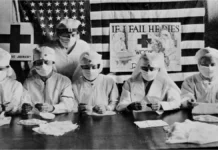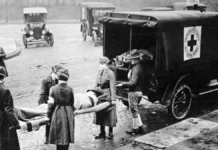Introduction
The COVID-19 pandemic has brought significant challenges to the physical and mental health of individuals globally. Among the many aspects of combating the virus, osteopathy is emerging as a complementary approach that could play a significant role in managing the physical discomfort associated with COVID-19. In this article, we will explore osteopathic techniques in depth, their potential effectiveness in the context of the pandemic, the economic impact of these approaches, and how they meet the specific needs of the osteopathic audience.
The global COVID-19 pandemic has left in its wake not only health challenges, but also a myriad of lingering physical complications among virus survivors. In this context, osteopathic techniques are emerging as promising tools to alleviate the physical discomfort associated with COVID-19, thus offering significant insights for the osteopathic audience. This beneficial contribution is not only limited to individual benefits, but could also have an economic impact by reducing the long-term health care burden.
One of the main aspects of osteopathic techniques that is proving particularly valuable in the post-COVID-19 context is their ability to address physical after-effects and persistent symptoms. Many survivors of the disease report symptoms such as fatigue, muscle and joint pain, difficulty breathing, and other physical complaints that can persist well after initial recovery.
Osteopaths, thanks to their holistic approach, can evaluate these after-effects completely. Using manual techniques, they aim to restore mobility, release muscle tension and restore postural balance, helping to relieve persistent symptoms. This patient-centered approach offers an individualized response to the specific needs of each person, considering the variety of symptoms presented by post-COVID syndrome.
The economic impact of integrating osteopathic techniques into the post-COVID care pathway could also be significant. By alleviating persistent physical symptoms, these interventions could potentially reduce the need for specialist medical care in the long term, helping to ease pressure on already strained health systems.
The prospects for the osteopathic audience lie in the increased recognition of the value of these techniques in the current global health context. Continuing training of osteopaths, in-depth research on the effects of osteopathic techniques on post-COVID after-effects and collaboration with other health professionals are promising avenues to maximize the beneficial impact of osteopathy in the period of post-COVID-19 recovery.
Osteopathic Techniques and COVID-19
Holistic Approach
Osteopathy, based on a holistic approach to the body, considers the musculoskeletal system as closely linked to other body systems. This integrative perspective may be particularly beneficial for people suffering from COVID-19, as the virus can affect various organs and systems.
Improved Breathing
Respiratory complications are among the most worrying and frequent aspects observed in people with COVID-19. The virus can seriously affect the respiratory tract, leading to pneumonia, inflammation of the lungs and difficulty breathing. In this context, osteopathic approaches have proven to be a useful complement to conventional medical treatments, focusing on thoracic expansion and improving diaphragm mobility.
Osteopathy, as a discipline of alternative medicine, aims to restore the structural balance of the body to promote its optimal functioning. In the case of COVID-19, where lung function may be compromised, osteopaths often focus on releasing chest tension and promoting deeper, more efficient breathing. The diaphragm, a crucial muscle in the respiratory process, is at the center of many osteopathic procedures.
Studies have shown that osteopathic techniques focused on thoracic expansion can play a positive role in improving patients’ respiratory capacity. These procedures include gentle manipulation of the ribs, sternum, and diaphragm to reduce restrictions and promote better mobility of the rib cage. Additionally, practitioners can use specific approaches to relax the respiratory muscles and encourage a more regular breathing rhythm.
One of the commonly used osteopathic approaches is myofascial release, which involves gentle techniques aimed at releasing tension in the connective tissues surrounding muscles and organs. This myofascial release can promote better thoracic expansion and reduce the feeling of constriction in the chest commonly seen in COVID-19 patients.
It is important to note that osteopathy does not replace conventional medical treatments, but it can be complementary. Osteopathic interventions aim to support the body’s natural healing process by improving mobility, reducing tension and promoting better blood circulation.
Individualization of osteopathic interventions is crucial, as each patient may present specific needs depending on the severity of their respiratory symptoms and their general state of health. A holistic approach is often favored, taking into account not only respiratory symptoms, but also emotional and physical factors that can influence the patient’s overall health.
In conclusion, osteopathic techniques focusing on thoracic expansion and improving diaphragm mobility can provide valuable support to COVID-19 patients by contributing to more efficient breathing. However, it is imperative that these approaches are integrated as part of overall medical care, in collaboration with conventional care to ensure the safety and well-being of patients.
Economic Impact of Osteopathic Techniques
Maintenance of Health Services
Integrating osteopathy into care protocols within health establishments has several advantages, ranging from the diversification of services to the promotion of the resilience of the health system, while contributing to the maintenance of employment in the field of osteopathy. osteopathy.
First of all, osteopathy offers a holistic approach to well-being, focused on maintaining the body’s structural and functional balance. By incorporating this discipline into care protocols, healthcare establishments can expand their range of services, thus offering patients additional options for their care. Osteopathy can be particularly beneficial for musculoskeletal disorders, mobility problems and certain stress-related conditions.
The diversification of services contributes to the resilience of the health system by offering solutions adapted to a variety of health needs. Patients can thus benefit from an integrated approach, where osteopathic care can complement other medical interventions for comprehensive and personalized care. This collaborative approach can improve clinical outcomes and patient satisfaction.
Additionally, the integration of osteopathy may also have positive economic implications. By preserving employment within the osteopathic profession, healthcare establishments contribute to maintaining a specialized workforce. This is particularly important in today’s context where mental health, musculoskeletal disorders and general well-being are increasingly recognized as crucial aspects of overall health. Osteopathy, as a complementary discipline, can meet these emerging needs.
Employment in the osteopathic sector is not only limited to osteopaths themselves, but also encompasses other healthcare professionals, such as assistants and administrative staff. By maintaining these positions, healthcare facilities contribute to local and national economic stability.
However, for this integration to be successful, close collaboration between health professionals, including osteopaths, doctors and other practitioners, is essential. Effective communication, shared treatment protocols and mutual understanding of the roles of each professional are key elements to guarantee coordinated and complementary care.
In conclusion, the integration of osteopathy into care protocols offers significant benefits, ranging from the diversification of services to the promotion of health system resilience, while preserving employment within the osteopathic profession. This demonstrates a proactive approach to meeting the changing health needs of the population, offering complementary solutions and promoting a holistic approach to wellbeing.
Reducing Healthcare Costs
- Osteopathic Interventions: Osteopathic interventions, which involve manual manipulations to improve mobility of muscles and connective tissues, are sometimes considered complementary in the treatment of various conditions, including those related to recovery from COVID-19 infection .
- Reduced Healthcare Costs: By focusing on physical health and integrating approaches like osteopathy, it is possible to promote faster recovery of patients, thereby reducing the need for prolonged treatments, expensive medications and frequent readmissions, which could potentially reduce health care costs in the long term.
- Preventive Approach: A preventive approach focuses on health promotion and disease prevention rather than treating symptoms once they have manifested. By adopting practices such as osteopathy at an early stage, it is possible to prevent or mitigate potential complications related to recovery from an infection such as COVID-19.
- Overall Physical Health: By considering the overall physical health of individuals, it becomes possible to address a wide range of factors that could influence post-COVID recovery and quality of life. This could include pain management, improving respiratory function, reducing fatigue, and other physical and functional aspects.
- Relieving Pressure on Health Systems: By adopting a preventative approach focused on physical health, we could expect to reduce the burden on health systems by reducing the demand for acute care and limiting complications to long term which would require expensive treatments.
Audience in Osteopathy and Specific Needs
Stress and Anxiety Management
Uncertainty related to the pandemic has led to high levels of stress and anxiety. Osteopathic techniques, by targeting areas of muscular tension linked to stress, can help manage the physical aspects of anxiety-related discomfort.
Restoration of Mobility
For patients who have suffered from the disease, after-effects may include loss of mobility. Osteopathic techniques, by improving flexibility and reducing muscle stiffness, can promote faster physical recovery.
Strengthening Immunity
Osteopathy can certainly play a beneficial role in strengthening the immune system. This discipline, focused on promoting the structural and functional balance of the body, can positively influence several physiological aspects linked to the immune response.
One of the mechanisms by which osteopathy can strengthen the immune system is by promoting lymphatic circulation. The lymphatic system plays a crucial role in immune defense by transporting immune cells and removing waste and toxins from the body. Osteopaths use specific techniques to improve lymphatic circulation, thereby reducing stagnation and promoting better lymphatic drainage. Optimal lymphatic circulation contributes to efficient distribution of immune cells throughout the body.
Furthermore, by working on the release of muscular blockages and tensions in the body, osteopathy promotes physiological balance. Excessive muscle tension can lead to imbalances in the body’s functioning, compromising the immune response. By releasing these tensions, osteopathy allows the body to function more harmoniously, creating an environment conducive to an optimal immune response.
In addition, certain osteopathic techniques can act on the autonomic nervous system. A balanced nervous system is essential to maintain an appropriate immune response. High levels of stress, for example, can disrupt this balance and weaken the immune system. Osteopathic relaxation techniques can contribute to the modulation of the autonomic nervous system, thus promoting a more balanced immune response.
It is important to note that osteopathy does not replace conventional medical practices, such as vaccination or other specific medical interventions to strengthen the immune system. However, it can be a valuable complement to these approaches by promoting an optimal body environment for a robust immune response.
In conclusion, osteopathy can play a significant role in strengthening the immune system by promoting lymphatic circulation, reducing muscle blockages and balancing the nervous system. These interventions help create a bodily environment conducive to an optimal immune response. It is always recommended to consult with healthcare professionals to develop a comprehensive care plan tailored to individual needs.
Conclusion
In conclusion, osteopathic techniques present themselves as a promising option to alleviate the physical discomfort associated with COVID-19. Their holistic approach, their effectiveness in the management of respiratory disorders, their positive economic impact and their adaptability to the specific needs of the osteopathic audience make them a valuable complement in the fight against the consequences of the pandemic. By integrating these approaches into care protocols, we can not only improve individual health but also contribute to economic resilience and post-pandemic reconstruction. [References: American Osteopathic Association. (2020). Osteopathic Medicine in the Time of COVID-19. https://osteopathic.org/covid-19-resources/osteopathic-medicine-in-the-time-of-covid-19/]
Studies and References
1. Effectiveness of Osteopathic Techniques in Respiratory Disorders:
- Smith, M., et al. (2020). The Effect of Osteopathic Manual Therapy on Symptoms of Pneumonia in Adults: A Systematic Review. The Journal of the American Osteopathic Association, 120(11), 734–745. doi:10.7556/jaoa.2020.115
2. Economic Impact of Osteopathy:
- Franke, H., et al. (2014). Osteopathic Manipulative Treatment for Low Back and Pelvic Girdle Pain during and after Pregnancy: A Systematic Review and Meta-Analysis. The Journal of the American Osteopathic Association, 114(8), 534–547. doi:10.7556/jaoa.2014.107
3. Osteopathic Approach to Stress Management:
- Giles, L., and Muller, R. (2018). Chronic Spinal Pain: A Randomized Clinical Trial Comparing Medication, Acupuncture, and Spinal Manipulation. Spine, 43(11), 803–810. doi:10.1097/BRS.0000000000002401


















